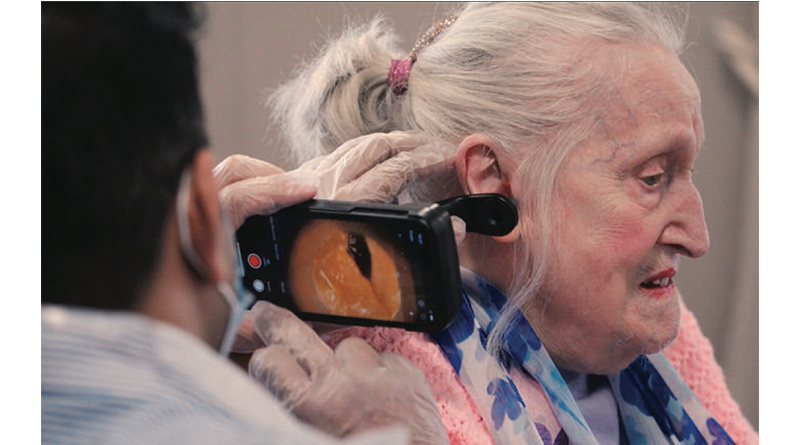The Future of FoodTech

WHY FOOD DELIVERY TECHNOLOGY IS IMPERATIVE FOR THE INDUSTRY’S SURVIVAL
With the global online food delivery market expected to reach $192 billion (£140bn) in 2025 (Research and Markets, 2021), it’s fair to say that this is where the future of food lies for many establishments. The COVID-19 pandemic accelerated the hospitality industry’s inevitable march towards tech – restaurants either embraced technology and thrived, or didn’t.
As a result the industry is still going through a period of hyper growth in response to the continuing surge in consumer demand for quick and convenient online food delivery services, via apps such as Just Eat, Deliveroo and UberEats. According to a recent Just Eat Takeaway.com report, food delivery saw a 79% increase in online orders in the first quarter of 2021, nearly double its predicted growth rate globally. At Deliverect, we’ve seen this come to life as we’ve helped to process an average of more than 1.5 million orders per week this year.That’s a 750% increase from the year before.
It’s clear that digital solutions have helped restaurants better serve their customers and adapt to life in the new normal. Online ordering remains a post-pandemic trend set to stay.With most restrictions now a thing of the past, let’s take a look at the tech trends that will continue to impact the food industry pandemic and beyond:
TAKEAWAY IS KING
One of the most striking trends this past 18-months was the huge growth of the takeaway market, with many more restaurants adding delivery and pick-up channels. Some of these restaurants were already on delivery platforms, but many had not considered takeout as a viable option for their type of establishment.
Many restaurateurs that joined Deliverect in 2021, having not previously offered delivery, told us that the results from delivery and pick-up orders were so good, they would continue using the channels even as dining rooms reopen.These restaurants are looking at how they can expand upon this and incorporate delivery channels into their long-term strategies.
CRAVING FOR CONTACTLESS
It’s clear that contactless technology and minimising human contact is still on the agenda for restaurant operators. One compromise that we are likely to see is technology trying to offer the normal restaurant experience whilst also reducing contact. Further to this, technology that eliminates close contact like digital menus, tableside ordering and payment apps, and self-service kiosks are likely set to rise.
ROBOTS ENTER THE RESTAURANT
AI and automation are also coming to the front-of-house, with KFC rolling out a new AI system to optimise menu performance.This year they announced a new system that will unlock value in the data from the restaurants, core menu and business; in order to help build a holistic, predictive view of each item.This helps KFC to use its data to provide a guest-centric menu, helping its restaurants to deliver the best service possible and to improve its operational efficiency. In order to enhance the customer’s experience and its operational efficiency. We can expect to see more automation in every part of the dining-out process from here on out.AI and robotic machines will work alongside human workers more and more as this will cut costs for operators and improve work-life balance for restaurant workers.
OMNI-CHANNEL IS THE NEW NORM
The last 18 months has shown restaurant operators the importance of an omni-channel strategy as so many restaurants took their menus online, interacted with customers through new avenues, and opened up new channels to take orders and payments.We will surely see more restaurants waking up to the importance of an integrated approach. Omni-channel has to be the strategy of the modern restaurant in 2021. Customers are demanding convenience and an excellent experience whether they’re ordering online for curbside pickup, booking via an app and dining in, or ordering from a third party for delivery.
While the rise in food delivery will continue to grow – it’s also important to take time to recognise all of the people involved in the food delivery process. On 8th September 2021, everyone at Deliverect celebrated the first annual International Food Delivery Day (IFDD); a new holiday designed to shine a well-deserved spotlight on the restaurateurs, wait-staff, chefs and delivery drivers who make food delivery possible.To celebrate we hosted a series of events in major cities around the world (including London, Manchester and Edinburgh) featuring giveaways, special menu items, music collaborating with restaurants such as BrewDog, Pizza Hut and Le Pain Quotidien.
We also launched the “Hidden Gems” contest, which welcomed small and medium-based restaurants to submit their online ordering “hidden gem” menu item.The winner, Los Costilla in Madrid, Spain received €50,000 plus 1-year’s free Deliverect services. An additional €50,000 was divided and awarded to runner-ups, special categories, and honourable mentions including Matthews Yard, a non-profit community cafe based in Croydon, London.
The pandemic has worked to reshape the retail hospitality industry in ways which will spell permanent changes to consumer behaviour – with new and heightened expectations from the brands they engage with. One thing’s for sure is that we’re going to see technological advances and changes in the future of the industry. Consumers now expect their everyday products to be available through more convenient means – including online delivery. Restaurants, if they didn’t realise it already, have seen first-hand the need to invest in technology or is paramount and play a crucial role in the restaurant industry’s recovery.
